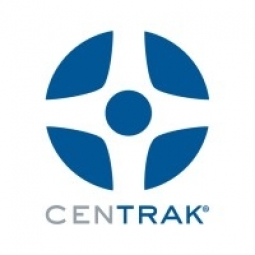Customer Company Size
Large Corporate
Region
- America
- Asia
Country
- United States
- Other
Product
- SPREO indoor location engine and navigation software
- SPREO cloud dashboard
- BLE beacons with custom firmware & extended battery life
Tech Stack
- Bluetooth Low Energy (BLE)
- Android and iOS mobile applications
- Software Development Kit (SDK)
Implementation Scale
- Enterprise-wide Deployment
Impact Metrics
- Customer Satisfaction
- Brand Awareness
Technology Category
- Networks & Connectivity - Bluetooth
- Application Infrastructure & Middleware - API Integration & Management
Applicable Industries
- Retail
Applicable Functions
- Sales & Marketing
- Business Operation
Use Cases
- Real-Time Location System (RTLS)
- Indoor Positioning Systems
- Retail Store Automation
Services
- Software Design & Engineering Services
- System Integration
About The Customer
The Taubman Company (NYSE: TCO) is a publicly-traded Real Estate Investment Trust (REIT) that operates high-end retail centers throughout the USA and Asia. They have thirty-five retail centers and are considered among the most prestigious shopping malls in the world. Taubman sought to find an indoor navigation SDK to power their Shopping Mall App that would provide their clients and merchants with an exceptional experience, and in turn, drive sales. They signed a contract with SPREO to implement the technology throughout eighteen malls in the United States by the end of 2015.
The Challenge
Taubman, a publicly-traded Real Estate Investment Trust (REIT) that operates high-end retail centers throughout the USA and Asia, was looking to enhance the shopping experience in their malls. They wanted to provide their clients and merchants with an exceptional experience that would drive sales. The challenge was to implement a Bluetooth Low Energy (BLE) based indoor positioning and navigation (IPIN) system throughout 18 malls by the end of 2015. They aimed to provide shoppers with a concierge app to help them at every turn and improve the overall visitor experience at the shopping malls.
The Solution
SPREO provided an integrated indoor location based services (LBS) solution that includes Bluetooth® Low Energy (BLE) SMART™ beacons, Software Development Kit (SDK) integrations for Android and iOS mobile applications, and licenses for indoor positioning and indoor navigation services. The SPREO location engine enables Taubman Center and its mall tenants to integrate store information, promotions, news, buzz notifications and more. Taubman will also utilize the SPREO online platform to leverage analytics insights from venue traffic and user behavior data. The Beacon Fleet Management in the SPREO cloud dashboard ensures that the system is always live and functional.
Operational Impact

Case Study missing?
Start adding your own!
Register with your work email and create a new case study profile for your business.
Related Case Studies.

Case Study
Improving Production Line Efficiency with Ethernet Micro RTU Controller
Moxa was asked to provide a connectivity solution for one of the world's leading cosmetics companies. This multinational corporation, with retail presence in 130 countries, 23 global braches, and over 66,000 employees, sought to improve the efficiency of their production process by migrating from manual monitoring to an automatic productivity monitoring system. The production line was being monitored by ABB Real-TPI, a factory information system that offers data collection and analysis to improve plant efficiency. Due to software limitations, the customer needed an OPC server and a corresponding I/O solution to collect data from additional sensor devices for the Real-TPI system. The goal is to enable the factory information system to more thoroughly collect data from every corner of the production line. This will improve its ability to measure Overall Equipment Effectiveness (OEE) and translate into increased production efficiencies. System Requirements • Instant status updates while still consuming minimal bandwidth to relieve strain on limited factory networks • Interoperable with ABB Real-TPI • Small form factor appropriate for deployment where space is scarce • Remote software management and configuration to simplify operations

Case Study
Digital Retail Security Solutions
Sennco wanted to help its retail customers increase sales and profits by developing an innovative alarm system as opposed to conventional connected alarms that are permanently tethered to display products. These traditional security systems were cumbersome and intrusive to the customer shopping experience. Additionally, they provided no useful data or analytics.

Case Study
How Sirqul’s IoT Platform is Crafting Carrefour’s New In-Store Experiences
Carrefour Taiwan’s goal is to be completely digital by end of 2018. Out-dated manual methods for analysis and assumptions limited Carrefour’s ability to change the customer experience and were void of real-time decision-making capabilities. Rather than relying solely on sales data, assumptions, and disparate systems, Carrefour Taiwan’s CEO led an initiative to find a connected IoT solution that could give the team the ability to make real-time changes and more informed decisions. Prior to implementing, Carrefour struggled to address their conversion rates and did not have the proper insights into the customer decision-making process nor how to make an immediate impact without losing customer confidence.

Case Study
Ensures Cold Milk in Your Supermarket
As of 2014, AK-Centralen has over 1,500 Danish supermarkets equipped, and utilizes 16 operators, and is open 24 hours a day, 365 days a year. AK-Centralen needed the ability to monitor the cooling alarms from around the country, 24 hours a day, 365 days a year. Each and every time the door to a milk cooler or a freezer does not close properly, an alarm goes off on a computer screen in a control building in southwestern Odense. This type of alarm will go off approximately 140,000 times per year, equating to roughly 400 alarms in a 24-hour period. Should an alarm go off, then there is only a limited amount of time to act before dairy products or frozen pizza must be disposed of, and this type of waste can quickly start to cost a supermarket a great deal of money.

Case Study
Supermarket Energy Savings
The client had previously deployed a one-meter-per-store monitoring program. Given the manner in which energy consumption changes with external temperature, hour of the day, day of week and month of year, a single meter solution lacked the ability to detect the difference between a true problem and a changing store environment. Most importantly, a single meter solution could never identify root cause of energy consumption changes. This approach never reduced the number of truck-rolls or man-hours required to find and resolve issues.








